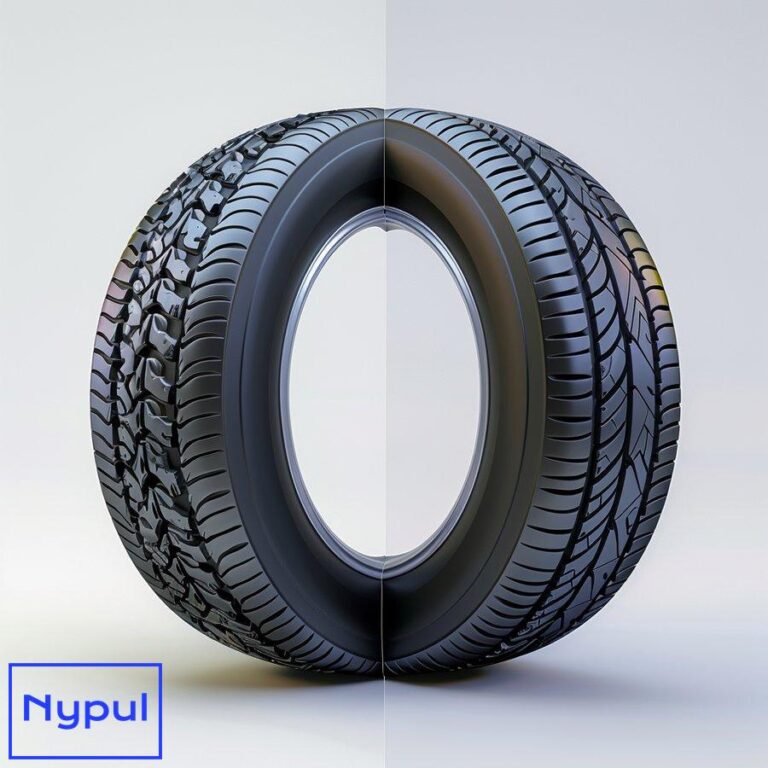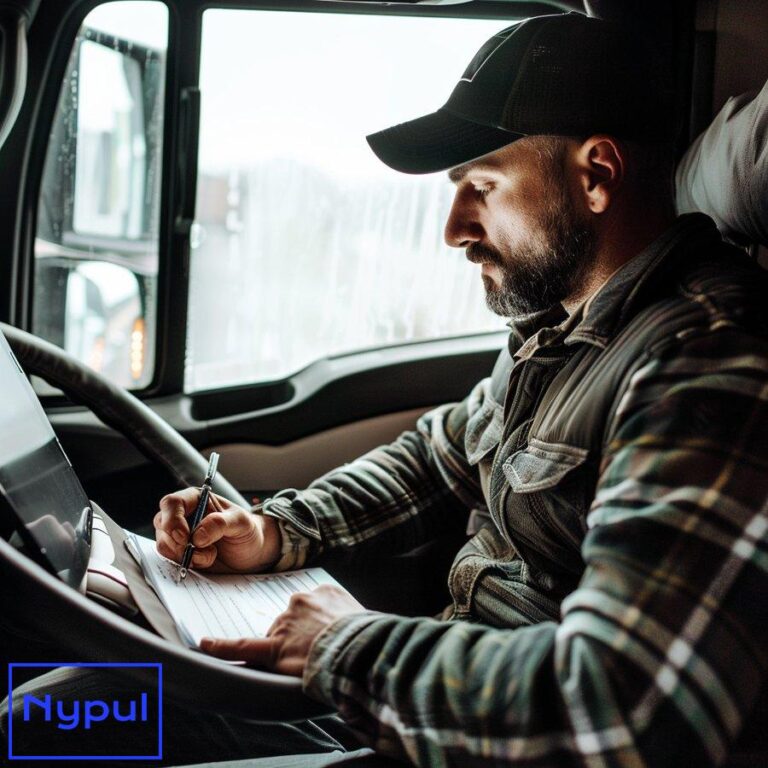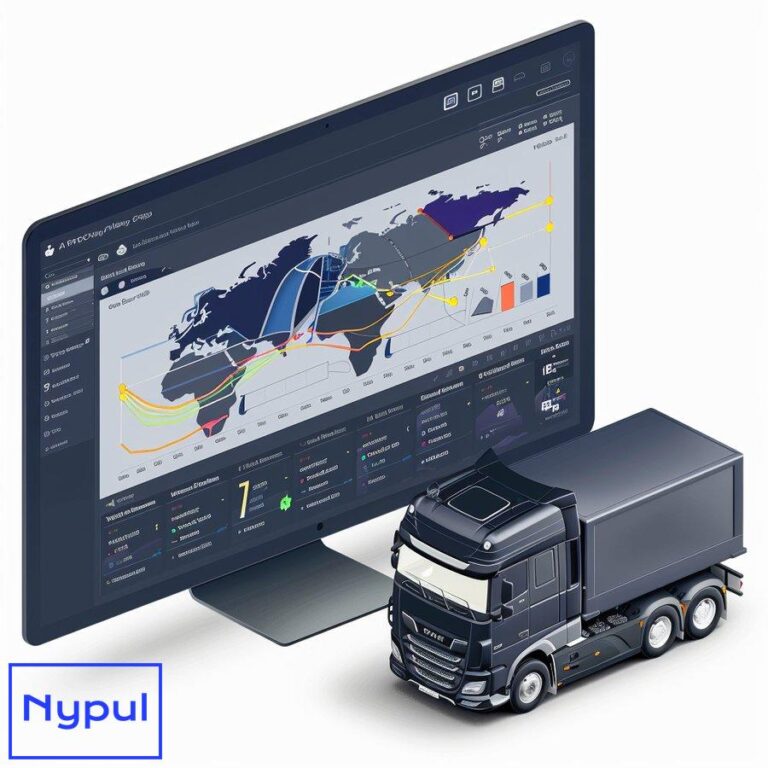How Long Does Container Take to Get Through Customs
What factors influence customs clearance time for containers?
The time it takes for a container to clear customs depends on several interconnected factors. Understanding these elements helps shippers and logistics professionals better prepare for potential delays and streamline their processes.
Documentation Accuracy and Completeness
Proper documentation forms the foundation of smooth customs clearance. Customs officials meticulously review all paperwork associated with incoming shipments. Any discrepancies, missing information, or errors can significantly extend processing times.
Key documents typically include:
• Commercial invoice
• Packing list
• Bill of lading
• Certificate of origin
• Import license (if required)
• Customs declaration forms
Ensuring these documents are filled out accurately, completely, and consistently across all paperwork is crucial. Even minor discrepancies like misspelled names or mismatched quantities can trigger additional scrutiny and delays.
Nature of Goods
The type of goods being imported directly impacts customs clearance timelines. Some categories require more rigorous inspection or additional documentation:
Regulated Items: Products like food, pharmaceuticals, chemicals, and electronics often face stricter controls and may need approval from multiple government agencies.
High-Value Goods: Expensive items or those prone to smuggling (e.g., luxury goods, precious metals) typically undergo more thorough examinations.
Perishables: Fresh produce, flowers, and other time-sensitive items may receive expedited processing but still require careful inspection for agricultural pests or diseases.
Restricted or Prohibited Items: Goods subject to import quotas, anti-dumping duties, or outright bans naturally face longer processing times and potential rejection.
Country of Origin
The exporting country influences customs scrutiny levels. Factors include:
Trade Agreements: Goods from countries with free trade agreements often clear faster due to reduced tariffs and streamlined procedures.
High-Risk Origins: Shipments from countries associated with counterfeiting, smuggling, or security concerns face increased inspection rates.
Sanction Compliance: Imports from sanctioned nations undergo extensive vetting to ensure compliance with trade restrictions.
Port Infrastructure and Staffing
The efficiency of the port of entry plays a significant role in clearance times:
Technology Adoption: Ports utilizing advanced scanning equipment and automated systems generally process containers faster.
Staffing Levels: Adequate customs personnel are essential to handle incoming shipments without creating backlogs.
Physical Capacity: Sufficient storage space and efficient container handling equipment minimize congestion-related delays.
Seasonal Fluctuations: Holiday periods or peak shipping seasons can strain port resources, leading to longer processing times.
Importer Profile and History
Customs authorities often consider the track record of the importing company:
Trusted Trader Programs: Companies participating in voluntary compliance programs like C-TPAT (in the US) may receive expedited processing.
Previous Violations: Importers with a history of customs infractions face increased scrutiny and potential delays on future shipments.
New Importers: First-time or infrequent importers may experience longer processing times as customs establishes their compliance profile.
External Factors
Several external elements can impact customs clearance timelines:
Global Events: Pandemics, natural disasters, or major geopolitical shifts can disrupt normal customs operations.
Policy Changes: New trade regulations or tariff adjustments may require additional processing time as customs officials adapt.
IT System Outages: Technical issues with customs databases or communication systems can cause widespread delays.
Understanding these factors allows shippers to better anticipate potential customs clearance timelines and take proactive steps to minimize delays. By focusing on accurate documentation, compliance with regulations, and building a positive track record with customs authorities, companies can work towards smoother, more predictable clearance processes for their containerized shipments.
How does the standard customs clearance process work?
The customs clearance process follows a structured sequence of steps designed to ensure compliance with import regulations, collect appropriate duties and taxes, and protect national security. While specific procedures may vary slightly between countries, the general framework remains consistent.

Pre-Arrival Notification
The customs clearance process begins before the container even reaches the port of entry:
Advance Electronic Information: Carriers must submit cargo manifests and other shipment details to customs authorities, typically 24 to 48 hours before arrival for ocean freight.
Risk Assessment: Customs uses this pre-arrival data to conduct initial risk profiling, determining which shipments may require additional scrutiny.
Arrival and Unloading
Once the vessel docks:
Manifest Verification: Customs officials compare the actual cargo to the submitted manifest, ensuring accuracy.
Container Discharge: Containers are unloaded and moved to designated customs areas within the port.
Document Submission
The importer or their customs broker submits the required documentation:
Entry Package: This includes the commercial invoice, packing list, bill of lading, and customs declaration forms.
Supporting Documents: Depending on the goods, additional paperwork like certificates of origin, import licenses, or product-specific certifications may be required.
Customs Review and Assessment
Customs officers examine the submitted documentation:
Classification and Valuation: Officials determine the correct tariff classification for the goods and assess their dutiable value.
Duty and Tax Calculation: Based on the classification and value, applicable import duties, taxes, and fees are calculated.
Compliance Check: The shipment is reviewed for adherence to import regulations, quotas, and any relevant trade agreements.
Physical Inspection (if required)
Not all containers undergo physical inspection. Selection is based on risk assessment and random sampling:
Non-Intrusive Inspection (NII): Many ports use X-ray or gamma-ray scanning to examine container contents without opening them.
Physical Examination: Higher-risk shipments may be unloaded for detailed inspection by customs officers.
Sample Collection: For certain goods, customs may take samples for laboratory analysis to verify compliance with safety or quality standards.
Release or Hold Decision
Based on the document review and any physical inspections:
Immediate Release: If everything is in order, customs grants clearance for the container to be released.
Additional Information Request: Customs may require clarification or additional documentation before clearing the shipment.
Formal Hold: In cases of suspected violations or serious discrepancies, the container may be formally detained for further investigation.
Payment of Duties and Taxes
Before final release:
Invoice Issuance: Customs provides an invoice detailing all applicable duties, taxes, and fees.
Payment: The importer or their representative must pay the assessed amount. Many countries offer deferred payment options for regular importers.
Release and Removal
Once all requirements are met and payments processed:
Release Order: Customs issues an official release order for the container.
Port Exit: The importer or their designated carrier can then remove the container from the customs-controlled area of the port.
Post-Clearance Procedures
The customs process doesn’t always end with the container’s release:
Post-Entry Audits: Customs may conduct follow-up reviews to ensure continued compliance.
Drawback Claims: Importers may file for duty refunds on certain re-exported goods.
Record Keeping: Importers must maintain customs-related documentation for a specified period (often 3-5 years) for potential audits.
This standardized process aims to balance efficient trade facilitation with necessary regulatory oversight. By understanding each step, importers can better prepare their shipments and documentation to minimize potential delays in the customs clearance process.
What are the average timeframes for container customs clearance?

Customs clearance times can vary significantly depending on numerous factors. However, understanding average timeframes helps importers and logistics professionals set realistic expectations and plan their supply chains accordingly.
Global Average Clearance Times
The World Bank’s “Doing Business” reports provide valuable insights into customs clearance efficiency across countries:
| Region | Average Clearance Time (Days) |
|---|---|
| OECD High Income | 1-2 |
| East Asia & Pacific | 2-4 |
| Europe & Central Asia | 2-3 |
| Latin America & Caribbean | 3-5 |
| Middle East & North Africa | 3-5 |
| South Asia | 4-6 |
| Sub-Saharan Africa | 5-7 |
These figures represent the time from the container’s arrival at the port to its release by customs. It’s important to note that individual shipments may clear significantly faster or slower than these averages.
Clearance Times by Transportation Mode
The mode of transport impacts customs processing times:
Air Freight: Generally the fastest, with many shipments clearing within hours to 1-2 days.
Ocean Freight: Typically takes 3-5 days for standard shipments, though this can extend to 1-2 weeks for complex cases.
Land Border Crossings: Usually range from a few hours to 1-2 days, depending on the specific border point and cargo type.
Factors Influencing Faster Clearance
Several elements can contribute to quicker-than-average processing:
Green Lane Programs: Trusted importers in compliance programs often receive expedited clearance, sometimes within hours.
Pre-Clearance: Submitting documentation before the container’s arrival can significantly reduce processing time upon entry.
Simplified Procedures: Some countries offer streamlined clearance for low-value shipments or specific product categories.
Reasons for Extended Clearance Times
Conversely, certain situations may lead to longer-than-average processing:
Document Discrepancies: Minor paperwork errors can add days to the clearance process as corrections are made and verified.
Physical Inspections: Containers selected for thorough examination may face delays of several days to over a week.
Regulatory Holds: Shipments requiring approval from multiple government agencies (e.g., FDA, USDA) often experience longer clearance times.
Port Congestion: During peak seasons or after disruptive events, backlogs at ports can extend clearance times for all shipments.
Clearance Time Variations by Product Type
Different categories of goods typically experience varying clearance timeframes:
Standard Consumer Goods: Often clear within the average timeframes for the respective country/region.
Perishables: Many countries prioritize clearance of time-sensitive items, aiming for same-day or next-day processing.
Hazardous Materials: Additional safety checks and documentation requirements can extend clearance to 5-10 days.
High-Value or Sensitive Items: Luxury goods, technology products, or items subject to quotas may face extended scrutiny, potentially taking 1-2 weeks to clear.
Clearance Time Trends
Global efforts to facilitate trade have generally led to decreasing clearance times over the past decade:
• Implementation of single-window systems for document submission
• Increased use of risk-based targeting for inspections
• Adoption of non-intrusive inspection technologies
Many countries now aim for average clearance times of 48 hours or less for compliant shipments.
Planning for Customs Clearance
When estimating clearance times for supply chain planning:
• Use country-specific averages as a baseline
• Add buffer time for potential delays, especially for new product lines or complex shipments
• Consider seasonal factors that may impact port efficiency
• Factor in the specific characteristics of your goods and your company’s import history
By understanding these average timeframes and the factors that influence them, importers can better manage expectations, plan inventory levels, and communicate more effectively with customers and supply chain partners regarding potential customs-related delays.
Why do some containers face delays in customs?
While many containers move through customs efficiently, certain factors can lead to significant delays. Understanding these common causes helps importers anticipate potential issues and take preventive measures.
Documentation Errors and Inconsistencies
One of the most frequent reasons for customs delays stems from problems with shipment paperwork:
Missing Documents: Failure to provide all required forms can halt the clearance process until the gaps are filled.
Inaccurate Information: Discrepancies between documents (e.g., quantities on the invoice not matching the packing list) trigger additional verification steps.
Incomplete Forms: Leaving required fields blank or providing vague descriptions of goods prompts customs to request clarification.
Valuation Disputes
Customs authorities carefully scrutinize declared values to ensure proper duty assessment:
Undervaluation Suspicion: If the declared value seems unusually low, customs may request additional proof of purchase or conduct a detailed valuation investigation.
Related Party Transactions: Shipments between affiliated companies often face extra scrutiny to verify arm’s-length pricing.
Classification Challenges
Assigning the correct tariff classification code is crucial but can be complex:
Misclassification: Using an incorrect Harmonized System (HS) code may lead to delays as customs reassesses the proper classification and applicable duties.
Novel Products: New or technologically advanced items may require additional time for customs to determine the appropriate classification.
Compliance and Regulatory Issues
Certain shipments face delays due to regulatory requirements:
Restricted Items: Goods subject to import quotas or requiring special permits often undergo more extensive review processes.
Intellectual Property Concerns: Suspected counterfeit goods may be detained for verification with rights holders.
Safety and Standards Compliance: Products like electronics, toys, or food items may require additional documentation or testing to ensure they meet national safety standards.
Risk Profiling and Random Inspections
Customs uses sophisticated risk assessment systems:
High-Risk Designations: Shipments from certain countries, involving specific product types, or from importers with compliance issues may be flagged for enhanced scrutiny.
Random Checks: Even low-risk shipments can be selected for inspection as part of routine sampling procedures.
Physical Examination Requirements
When containers are selected for inspection, delays are almost inevitable:
Scheduling Constraints: Limited availability of inspection personnel or equipment can create backlogs.
Container Destuffing: Fully unloading a container for thorough examination is time-consuming and may require coordination with the importer.
Laboratory Analysis: If samples are sent for testing (e.g., food safety checks), results may take several days to process.
Customs Resource Limitations
The capacity of customs authorities impacts processing times:
Staffing Shortages: Insufficient personnel, especially during peak seasons or holiday periods, can create bottlenecks.
Technology Issues: Outages or limitations in customs’ IT systems can slow down clearance procedures across the board.
Port Congestion: High volumes of incoming containers may overwhelm available customs resources, leading to general processing delays.
Importer-Specific Factors
An importer’s history and profile can influence clearance times:
New Importers: Companies without an established track record often face more rigorous checks on their initial shipments.
Previous Violations: Importers with a history of customs infractions typically experience heightened scrutiny on subsequent shipments.
Incomplete Broker Information: If the designated customs broker lacks necessary details about the shipment, it can lead to back-and-forth communications and delays.
External and Geopolitical Factors
Broader issues beyond the specific shipment can cause delays:
Trade Disputes: Escalating tariffs or sudden changes in trade policies may require customs to implement new procedures, slowing down overall processing.
Security Alerts: Heightened security measures in response to global events can lead to more stringent and time-consuming inspection protocols.
Natural Disasters: Weather events or other disasters affecting port operations naturally impact customs clearance timelines.
Understanding these potential delay factors allows importers to take proactive steps:
• Implement rigorous document review processes
• Invest in staff training on customs compliance
• Consider participation in trusted trader programs
• Maintain open communication channels with customs brokers and authorities
• Build buffer time into supply chain planning for potential customs delays
By addressing these common issues, importers can work towards minimizing customs-related delays and maintaining more predictable shipment timelines.
How can shippers expedite the customs clearance process?
Efficient customs clearance is crucial for maintaining smooth supply chains and meeting delivery deadlines. Shippers can employ several strategies to accelerate the process and minimize potential delays.
Embrace Technology and Automation
Leveraging digital tools streamlines customs procedures:
Electronic Data Interchange (EDI): Implement EDI systems to submit customs declarations and other required documents electronically, reducing manual processing time.
Automated Broker Interface (ABI): In the US, connect with Customs and Border Protection’s ABI system for faster data transmission and processing.
Track-and-Trace Systems: Utilize real-time tracking solutions to monitor shipment status and proactively address any customs holds.
Optimize Documentation Practices
Accurate and complete paperwork is fundamental to swift clearance:
Document Checklist: Develop comprehensive checklists for each shipment type to ensure all required forms are included.
Standardized Templates: Create pre-filled templates for common documents to reduce errors and inconsistencies.
Digital Document Management: Implement a centralized system for storing and quickly retrieving customs-related documentation.
Invest in Compliance Programs
Participation in government-sponsored trade facilitation initiatives offers significant benefits:
Authorized Economic Operator (AEO): Join AEO programs (or equivalents like C-TPAT in the US) to gain trusted traderstatus, which can lead to expedited customs processing and reduced inspections.
Training and Education
Investing in training for employees involved in customs processes enhances compliance and efficiency:
Customs Regulations Training: Regularly educate staff on current customs regulations, documentation requirements, and best practices for compliance.
Cross-Training: Ensure that multiple team members understand customs processes to prevent delays caused by staff absences or turnover.
Engage Experienced Customs Brokers
Working with knowledgeable customs brokers can significantly streamline the clearance process:
Expertise in Regulations: A skilled broker understands the intricacies of customs regulations and can help navigate complex requirements.
Proactive Communication: Good brokers maintain open lines of communication with customs authorities, allowing for quicker resolution of any issues.
Pre-Arrival Processing
Taking steps before the container arrives at the port can expedite clearance:
Pre-Clearance Programs: Some countries offer pre-clearance options that allow importers to submit documentation and receive approval before arrival.
Advance Cargo Information Submission: Providing cargo details to customs ahead of time helps facilitate risk assessment and reduces processing time upon arrival.
Utilize Expedited Services
Many logistics providers offer expedited customs services:
Priority Processing Options: Engage logistics companies that provide priority handling for urgent shipments, ensuring they receive faster attention from customs.
Express Shipping Services: For time-sensitive items, consider express shipping options that may include faster customs processing as part of the service.
Maintain Open Communication
Effective communication with all parties involved in the supply chain is essential:
Regular Updates with Customs Brokers: Keep in touch with your broker for real-time updates on shipment status and any potential issues.
Collaborate with Suppliers and Carriers: Ensure that suppliers provide accurate information and that carriers are aware of any specific customs requirements related to your shipments.
By implementing these strategies, shippers can significantly expedite the customs clearance process, reduce delays, and enhance overall supply chain efficiency. Prioritizing compliance, leveraging technology, and maintaining strong relationships with customs brokers are key components to achieving smoother operations.
What special considerations apply to time-sensitive or high-value shipments?
Time-sensitive and high-value shipments require careful planning and execution to ensure timely delivery while maintaining compliance with customs regulations. Understanding the unique challenges associated with these types of shipments helps shippers mitigate risks and optimize their logistics strategies.
Prioritization of Time-Sensitive Shipments
Time-sensitive shipments often include perishable goods, urgent medical supplies, or critical components for manufacturing. These require special attention during the customs clearance process:
Expedited Customs Processing Options
Many countries offer expedited processing for time-sensitive shipments:
• Fast Track Programs: Some customs authorities provide fast track lanes for urgent shipments, allowing quicker inspections and approvals.
• Pre-Clearance Procedures: Utilizing pre-clearance options enables shippers to submit documentation before arrival, reducing delays upon entry.
• Dedicated Customs Agents: Engaging dedicated agents who specialize in time-sensitive shipments can help navigate complexities quickly.
Packaging and Labeling Considerations
Proper packaging and labeling are crucial for time-sensitive items:
• Temperature Control: For perishable goods, ensure appropriate temperature-controlled packaging to maintain product integrity during transit.
• Clear Labeling: Clearly label packages as “urgent” or “time-sensitive” to alert customs officials to prioritize these shipments.
• Documentation Readiness: Keep all necessary documentation readily accessible to expedite inspections when containers arrive at the port.
Handling High-Value Shipments
High-value shipments face additional scrutiny due to their potential for theft or fraud. Special considerations include:
Enhanced Security Measures
Implementing security protocols is essential for high-value goods:
• Insurance Coverage: Ensure adequate insurance coverage is in place to protect against loss or damage during transit.
• Secure Transportation Methods: Utilize secure transportation options (e.g., armored vehicles) when moving high-value items.
• Tracking Systems: Employ advanced tracking technologies to monitor shipment status in real-time, providing visibility throughout the supply chain.
Documentation Requirements
High-value items often require additional documentation:
• Proof of Value: Provide detailed invoices or appraisals to substantiate declared values for customs purposes.
• Certificates of Authenticity: For luxury goods or branded products, include certificates verifying authenticity to prevent counterfeiting issues during clearance.
• Compliance Documentation: Ensure all necessary compliance documents are submitted accurately to avoid delays due to regulatory checks.
How do post-clearance procedures affect overall container processing time?
Post-clearance procedures play a critical role in determining the overall efficiency of container processing times. While many importers focus primarily on the initial clearance steps, understanding what happens afterward is equally important for effective supply chain management.
Post-Clearance Audits

Customs authorities may conduct post-clearance audits on randomly selected shipments or those flagged for further review:
• Audit Frequency: The frequency of audits varies by country but typically occurs within a few months after clearance.
• Documentation Review: Auditors assess compliance with regulations by reviewing submitted documents against actual shipment records.
• Potential Penalties: If discrepancies are found during audits, importers may face penalties, additional duties, or even legal action depending on severity.
These audits can lead to further scrutiny of future shipments if issues arise, impacting overall processing times for subsequent containers.
Drawback Claims
Importers may be eligible for duty refunds on certain goods that are re-exported or destroyed:
• Application Process: Filing drawback claims involves submitting detailed documentation proving the goods were exported or destroyed within a specific timeframe after importation.
• Processing Times: The claims process can take several weeks or months, depending on the complexity of the claim and the efficiency of the customs authority involved.
Delays in drawback claims can affect cash flow and financial planning for importers relying on refunds from previous shipments.
Record Keeping Requirements
Maintaining accurate records is essential for compliance with post-clearance procedures:
• Retention Periods: Most countries require importers to retain records related to customs transactions for 3-5 years.
• Audit Preparedness: Proper record keeping ensures that companies can quickly provide necessary documentation during audits without unnecessary delays.
Failure to maintain adequate records may result in penalties or complications during future audits or claims processes.
What tracking and communication systems are available for monitoring customs clearance?

Effective tracking and communication systems are vital for monitoring customs clearance processes. These tools help importers stay informed about their shipment status, manage potential delays proactively, and enhance overall supply chain visibility.
Electronic Data Interchange (EDI)
EDI systems allow seamless communication between importers, logistics providers, and customs authorities:
• Automated Document Submission: EDI enables electronic submission of required documents directly to customs authorities, reducing manual errors and speeding up processing times.
• Real-Time Updates: Importers receive instant notifications regarding their shipment status, including any holds or requests for additional information from customs.
This technology streamlines communications and enhances operational efficiency by minimizing paperwork-related delays.
Customs Tracking Portals
Many countries offer online tracking portals where importers can monitor their shipment status:
• Accessing Portals: Importers typically need a unique identifier (e.g., bill of lading number) to access tracking information related to their containers.
• Status Updates: Portals provide real-time updates on clearance status, including whether a shipment is under review or has been released by customs.
These portals enhance transparency throughout the shipping process by allowing importers direct access to critical information regarding their containers’ progress through customs.
Mobile Tracking Applications
Mobile applications designed specifically for logistics management enable users to track shipments on-the-go:
• User-Friendly Interfaces: Many apps feature intuitive designs that allow users to quickly check shipment statuses without navigating complex websites.
• Push Notifications: Users receive alerts about important updates regarding their containers (e.g., arrival times, clearance statuses) directly on their mobile devices.
Mobile tracking solutions improve accessibility and responsiveness by keeping stakeholders informed at all times throughout the shipping process.
How do customs regulations and compliance impact clearance times?
Customs regulations play a pivotal role in determining how quickly containers clear through ports. Compliance with these regulations is critical not only for avoiding delays but also for ensuring smooth operations within the global supply chain ecosystem.
Understanding Customs Regulations
Customs regulations encompass a wide range of rules governing imports into a country:
-
Tariff Classification Codes: Accurate classification using Harmonized System (HS) codes determines applicable duties and taxes.
-
Import Permits & Licenses: Certain products require specific permits before they can be imported legally.
-
Safety Standards Compliance: Many countries enforce strict safety standards (e.g., FDA regulations) that must be met before goods can enter the market.
Failure to comply with these regulations may result in significant delays as authorities work through potential violations or discrepancies in documentation.
Compliance Impact on Clearance Times
The relationship between compliance efforts and clearance times is straightforward:
-
Accurate Documentation Submission: Submitting complete documentation ensures faster processing times since there are fewer chances of errors triggering additional inquiries.
-
Participation in Trusted Trader Programs: Companies enrolled in programs like C-TPAT often experience expedited processing due to their established compliance records.
-
Risk Assessment Factors: Customs uses risk assessment algorithms; compliant importers are less likely flagged for inspection compared to those with previous violations.
Understanding how compliance affects clearance times allows importers to prioritize adherence efforts within their organizations effectively. By investing resources into ensuring regulatory alignment from documentation through delivery stages, businesses can positively influence their overall supply chain performance while minimizing potential disruptions caused by lengthy customs procedures.






